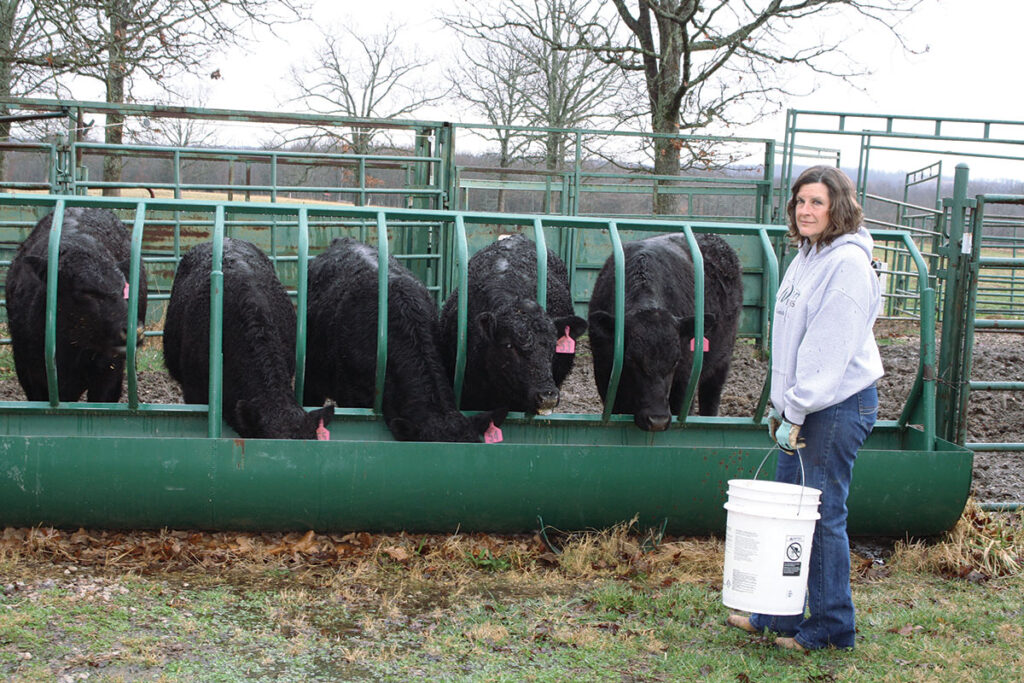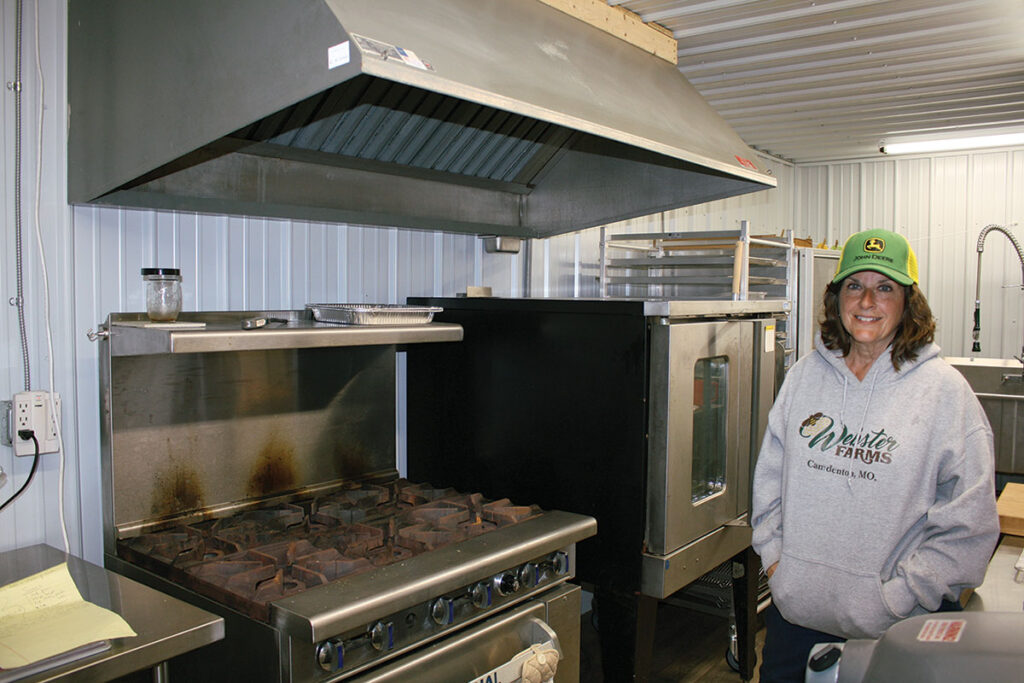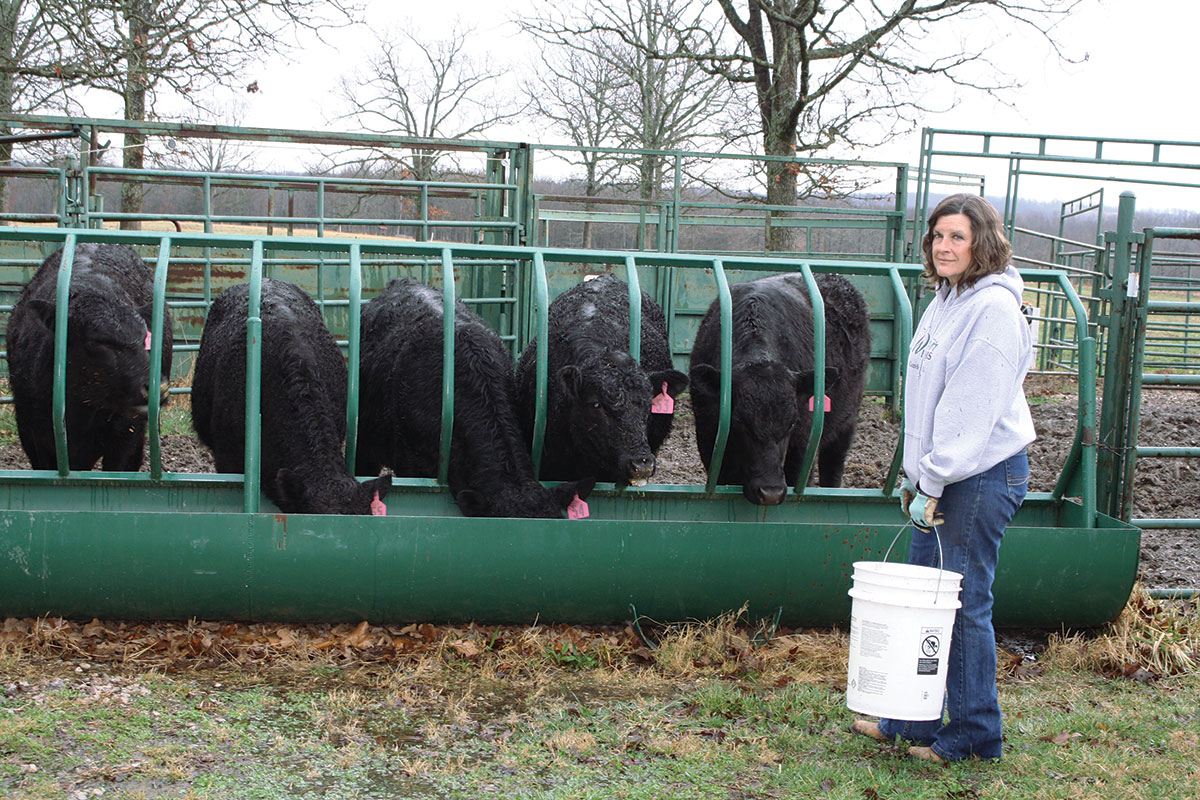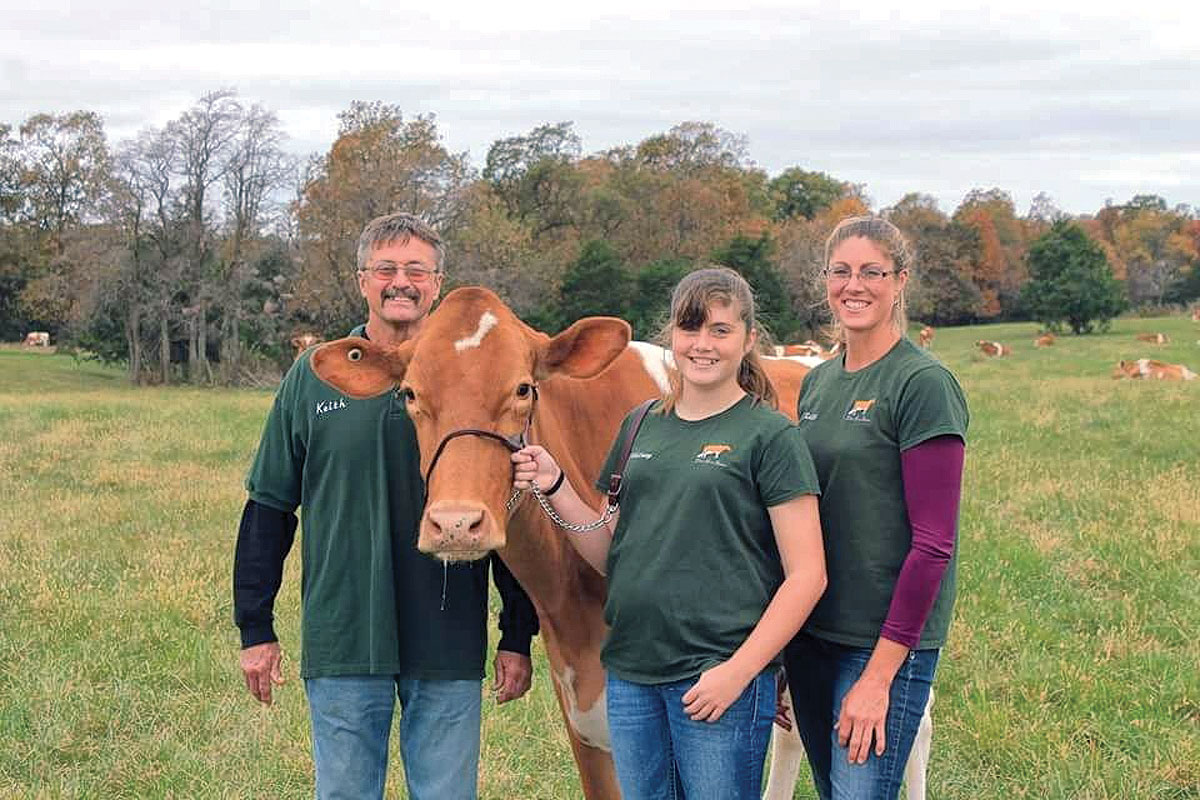
Webster Farms offers farm-to-plate foods for all tastes
Linda Webster didn’t grow up around farming, but once the farming bug bit the now-retired registered nurse, she caught farm fever.
Linda and her husband James own Webster Farms in Camdenton, Mo., where Linda is the primary operator. James works full time at his own plumbing company, Webster Plumbing, a family-owned business since 1955. James had no farming experience either, but that all changed when they purchased their farm, which consists of 152 acres.
“We moved here in 1991 and kind of piddled with it, adding more each year,” Linda said.
Webster Farms offers a wide-array of farm-to-plate items, all produced on the Camden County, Mo., farm, which includes a cow/calf operation that produces steers for their beef operation, seasonal vegtables, eggs, chicken and honey.
Linda markets products at farmers markets in Linn Creek and Camdenton.
“More people want to buy locally,” Linda said. “People want to know where their food comes from, and they are always asking if they can some see our farm. In this area, we have all of the city people who come down (to the Lake of the Ozarks). They all think we are dirt cheap because they are use to the city prices.”
Webster Farms started with the cow/calf operation that now has 30 black Angus females and Angus herd bull.
Some calves are sold at market, but others are kept back for the farm’s beef sales.
“That is growing more each year,” Linda said. “We started that because you can make more money from your steers. We have been doing it for about two years, and when COVID hit, we had people calling us from all over the place; it was nuts. It has slowed down a little because there isn’t the panic, but we developed return customers.”
Steers for retail cuts are born and raised on the farm. Steers are raised on grass and then offered a mixed commercial ration for 90 days.
“We don’t like pure grass-fed beef,” Linda said. “You have got to get that grain to give the beef flavor. I did the University of Missouri-Extension’s Pearls of Production each November, and we had a taste test of beef, and you could tell the difference. Everyone picks the grain-finished beef.”
After 90 days on grain, steers are processed at an inspected facility and sold at the farmers markets or straight from the farm.
The majority of beef sales are on the retail cut side, allowing customers to have the farm-fresh beef they want without purchasing a whole or half.
“That’s a good chunk of money for people to come up with, and some people don‘t have the freezer space,” Linda said. “I have people who will buy 2 or 3 pounds of hamburger and a roast every week.”
Webster Farms works to have meat available at all times, adding that three steers will be processed at the end of March, and other steers will be processed throughout the year.
“We just want to keep it going; we don’t want to run out,” Linda said. “Last year, we ran out and when that happens, you lose the momentum a little.”
Steers are processed at about 16 to 18 months of age or about 1,100 pounds.
“We band steers when they are a little bigger,” Linda said. “My husband thinks they gain better if we leave them as bulls a little longer, so they are about 400 pounds when we band them.”
Farm-raised beef has proven to be a good venture for Webster Farms, and they are also investigating the possibility of moving toward offering non-GMO.
“That’s what people really want right now,” Linda said, adding that steers meant for the beef program are the only bovines that receive grain daily. The main herd is offered a commercial mineral, and James occasionally feeds range cubes.
On the poultry side, Linda has both laying hens and meat birds. Egg layers are on the farm year-round, but she only raises meat birds through the summer months, with a few in the fall. Meat birds are reared in chicken tractors that Linda moves to new areas daily. She will get a shipment of 100 Freedom Rangers of the year in April. The chicks will be only a few days old and will not be moved to the outdoor tractors until they are about 3 to 4 weeks of age.
“They don’t have the problems that the Cornish normally do,” Linda said. “They don’t get so heavy that they can’t walk.”
Broilers are processed at 9 weeks of age by a processor in Versailles, Mo., weighing birds 4 to 4 1/2 pounds.
In addition to scratching out insects, broilers are offered a non-GMO feed sourced from a Versailles retailer.
Layers are Cinnamon Queens and Delawares. She alternates the breeds of the birds in order to keep track of the age, making it easier determine hen rotation. Once the hens are older, usually about 4 years old, they are processed as stewing hens for family use.
Chickens are also offered produce that isn’t saleable.
Linda said predator issues, including domestic dogs and cats, prevent her from raising free-range broilers or laying hens.
Linda enjoys the cattle and poultry operations, but her first farm love was raising produce. Webster Farms built the first high tunnel through a grant from the Natural Resources Conservation Service, followed a second tunnel.
One tunnel is planted with beets, spinach, radishes and carrots, and soon there will be cucumbers, broccoli and green beans. The second tunnel will soon be filled with 400 tomato plants, which Linda starts from seed.
“I usually start planting in February, but I’m glad I didn’t this year,” Linda said, referring to the polar vortex that blanked the nation in mid-February. “I couldn’t tell you how much we grow, but it is steady all summer long.”
In her raised beds outside, which she started about 15 years ago, Linda utilizes a soil-less mix. Linda said the mix does not allow for weed growth, but her plants grow well. Raised beds grow strawberries, garlic, potatoes and other crops. In all, Linda grows about 20 different crops.
“While I was still working, I started doing farmers markets and have been doing the produce longer, much longer, than the beef. About the only thing I don’t grow are melons. I haven’t had much luck with them.”
Bees are used as pollinators on the farm and also produce honey that Linda sells.
“I love my bees,” Linda said. “I can just sit out there on my lawn chair and watch them. I’ve had bees for about 15 years, and the most I have had has been eight hives. We don’t buy bees anymore, and I caught four swarms last year. We have our traps out and are seeing a little activity. Those are the bees you want because they can survive the winters out here.”
Linda is always looking at ways to expand her market and experimenting. One of the new crops in the works is elderberries.
“I want elderberries, personally, for the juice and everyone asks about it,” Linda explained. “I really think it’s going to turn into something big.”
She also plans to grow a small patch of wheat this year, which she will harvest to make flour for items she makes in her commercial kitchen.

“I really don’t know what I’m getting into with that,” she said with a laugh.
The commercial kitchen started as a way for Linda to keep her honey clean as she processes it, but it quickly grew into yet another part of her farm.
“I needed something to fill in at farmers markets between now and when the produce hits, so I make bread,” Linda said. “I knew if I was going to do it, I knew it had to meet commercial standards.”
From her kitchen, Linda also creates videos she posts online to help customers understand how to store and cook certain food items, and to give people a look at life on the farm.
The Websters purchased their own hay equipment last year.
“My husband doesn’t like waiting on people,” Linda said with a laugh. “People thought we were crazy, but you want to get your hay in when it’s ready, not when someone can get to it. We have our hay, a grass mix, and then we have three or four other fields we cut that belong to other people. We get the hay because they don’t want it.”
Linda added that they would like to purchase more land for their haying operation but have yet struck a deal.
Being the primary operator, Linda said she learned ways to save time and steps, allowing her to become more efficient in her daily routine. For example, the farm utilizes a bulk feed bin, eliminating the need for bagged feed. They use a walk-up, fence-line feeding system that keeps her out of the area where the steers for the beef program are located. She also placed shingles between her raised bed to eliminate mud and weeds, and Linda took advantage of her husband’s plumbing skills to add a watering system to her raised beds. Chickens even feed themselves at Webster Farms.
“We got a feeder that we will fill once a week, and the chickens step on the paddle,” Linda said. “We have an automatic waterer for the chickens with a 5-gallon bucket with a toilet flange in it. When the water goes down, it automatically fills back up. They may be little things, but they really do add up. I had problems with my birds eating eggs, so we put in a Best Nest box where they can go in and lay their eggs, but then the eggs roll away, and they can’t get to them. Plus, the eggs are cleaner.”
To make pastures more efficient, the Websters have implemented a strip grazing program, which has improved their forages.
“It’s pretty amazing to see that line,” Linda said. “You have to use your pastures and land efficiently. If you don’t, why have it?”
After more than 20 years in nursing and working various other jobs before she started nursing school at the age of 41, Linda said she has found her place – her favorite place.
“No one tells me what to do out here,” she said with a laugh. “There aren’t policies and procedures to follow, and I love this.”







